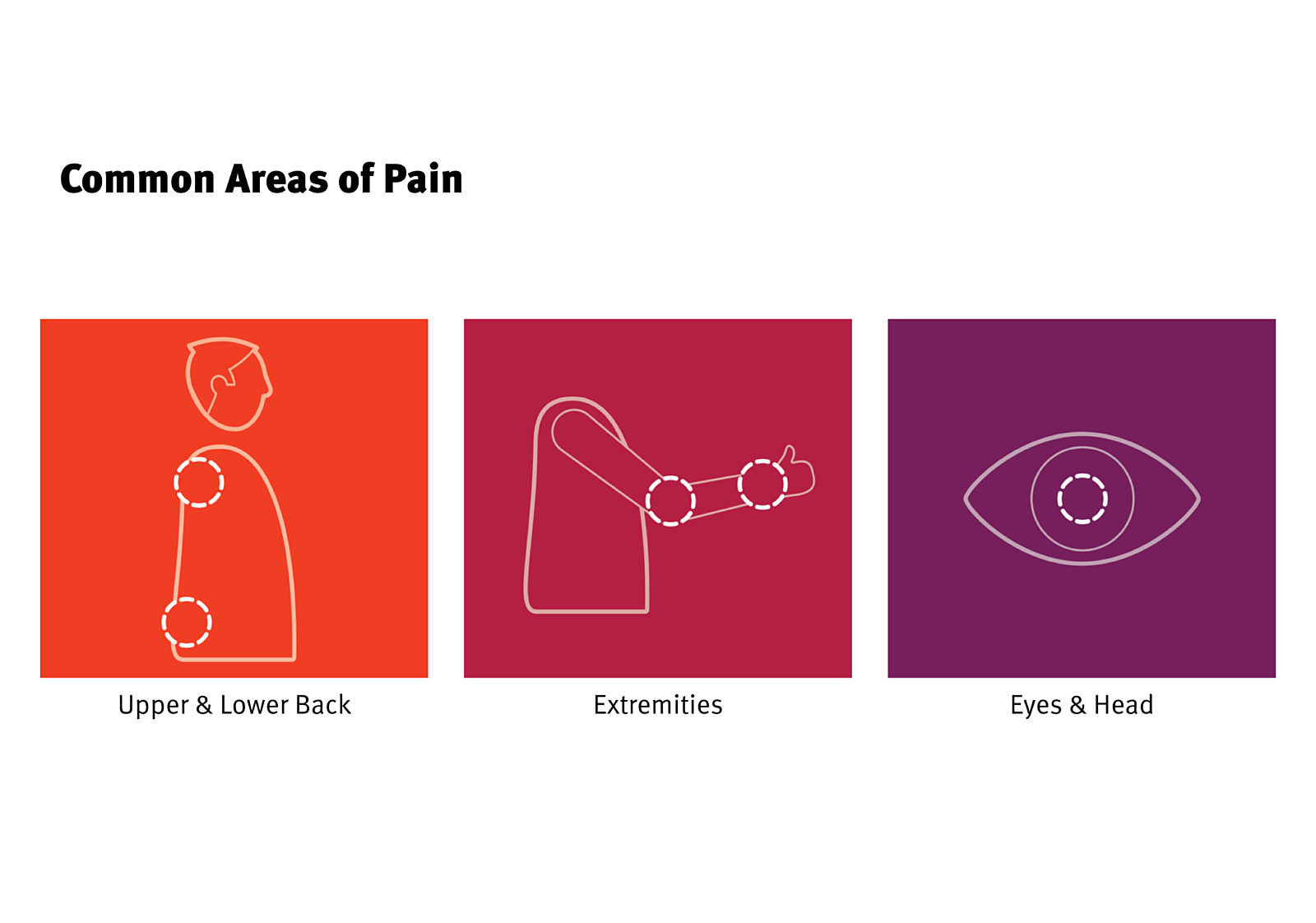Quick Fixes for Common Pain
Whether working from the office or at home, the average 8 hour work day puts a lot strain on your body.

Back pain, stiffness or soreness in the upper and lower extremities, headaches, and eyestrain are the most common types of pain associated with office work according to data Herman Miller obtained from three independent ergonomic consulting companies who train on and evaluate ergonomics in large and small businesses.
Unlike previous generations of workers, most of us spend the workday typing on computers. Then, after work, we do personal work on our home computer or text and browse on a smartphone or tablet. We do this day after day, never giving our bodies enough time to recover. All of this strain can result in injuries, so it's best to adjust your posture and protect your body before that can occur.

Back pain is one of the most common complaints of office workers. If you are experiencing pain in your lower back after working for the entire day or even just a few hours, try the following:
- Check the height of your chair. Your knees should be angled at approximately 90° with your thighs parallel to the floor.
- Check your posture to make sure you're not slouching or leaning toward your screen. Sit with your back pressed against your chair and adjust your monitor so that it's an arms length away.
- Check the seat of your chair to make sure your hips and lower spine are able to make contact with the backrest.

For pain in your upper back or shoulders try the following:
- Check if you are twisting your head at the neck. Adjust your monitor so that you are able to look straight forward.
- Check if your workstation is too high or too low, either of which will cause muscle tension. Your work surface should be just below elbow height. If you cant' change the height of your desk and it's too high try using a keyboard tray to lower your arms and relax your shoulders or lower the height of your chair. If it's too low, place your keyboard on a stationary object such as a book so that it is higher than the surface.
- If the pain is on your mouse-arm side check the mouse distance. Pull your elbow closer to your body to release shoulder strain.

There could be a variety of factors that can cause headaches, but one common issue is eye strain. Try the following to alleviate this pain:
- Check how far your monitor is from your face. Your monitor should be about an arms length away from your body, so adjust accordingly.
- Adjust or increase text size so that you aren't squinting or struggling to read what's on your screen. If it's still hard to see consider purchasing a larger monitor.
- Check the lighting in your workspace and use a desk lamp or overhead light to reduce strain on your eyes.

Finding even support that distributes the contact pressure along our whole forearm is the best way to help relieve pain in the arms and hands, and even helps the neck and back. Try the following adjustments for hand tingling or numbness:
- Check the angle of your wrists. Your forearm and wrists should be straight from elbow to fingertips.
- Check if your next is twisted and adjust your head so that it's pointing straight forward.
- Check for high contact pressure on your wrist or forearm from your work surface or edge of your desk. Adjust your chair and posture so that your arms and elbows are supported and rest gently on the flat surface instead of the edge.

Good, even support for buttocks and thighs will maintain better blood flow (tissue perfusion) and reduce the high pressure points (like a hard, flat seat or a seat pan that hits the back of your leg) that can cause discomfort. Try the following to help with numbness or pain:
- Check seat pan (the flat area where you sit in a chair) depth. Make sure there is 2 to 3 fingers of distance between the back of your knee and the chair.
- Check your chair height to make sure your knees are bent at a 90° angle and your thighs are parallel to the ground.
- Make sure your feet are resting flat on the floor. If this is not possible with your chair height try using a footrest.


















